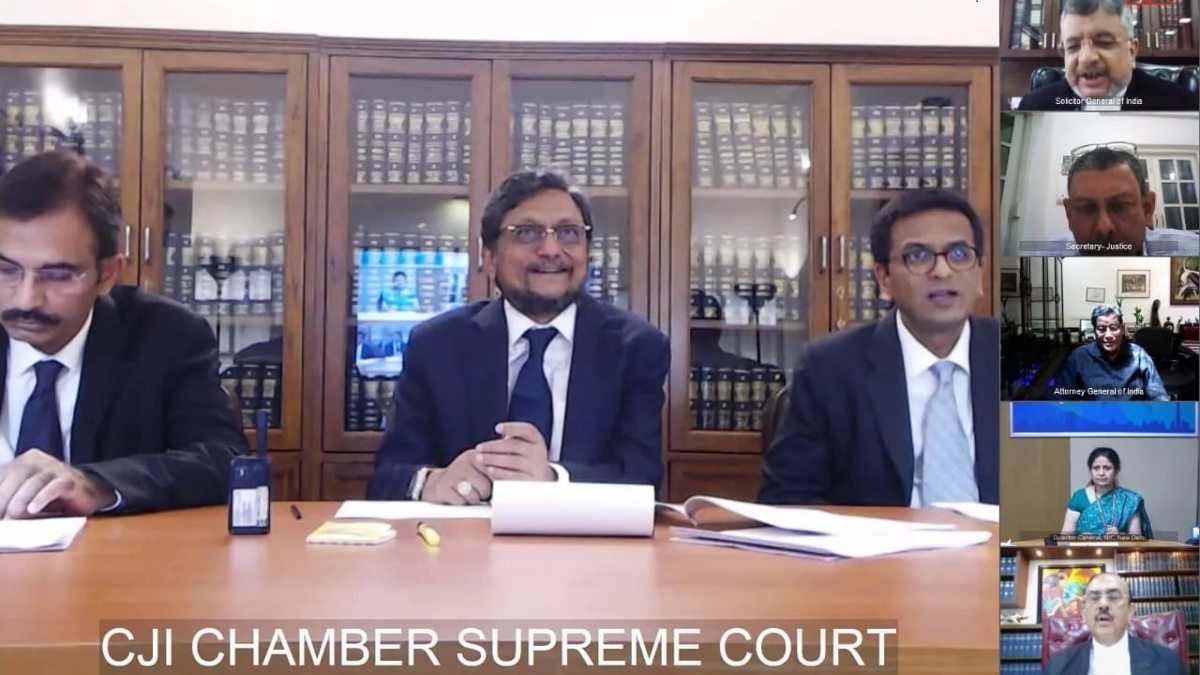
In the first part of this article, the authors had analysed the possible implications of transitioning to a partial online dispute resolution legal system in the Indian context. The following sets out the final part of the article.

Suggestions to take things forward
Courts across different international jurisdictions such as the United States of America, the United Kingdom, Australia, Singapore have moved into the digital space for the discharge of many of their judicial functions. Some suggestions that can be borrowed from best legal practices of different international jurisdictions for incorporating them into our system of judicial functioning can be: 1: E-verification of affidavits can be done by the party before a notary public which can then be e-filed along with other pleadings with the e-signatures. 2: The verified pleadings and interim applications can be standardised as per prescribed forms and be electronically uploaded on the court’s secure encrypted e-platform having the latest and a robust backend infrastructure both in terms of hardware and software with password being generated by the system for each matter/filing. Any defects in e-pleadings pointed out by the registry could be cured online with the need for limited physical interface with the court staff. 3: Court fees too can be paid electronically to the court’s registry with its proof annexed with the document being filed. 4: After approval by the registry, the service of pleadings, notices, judgements and orders can be affected through the registry via email, WhatsApp and SMS alerts. 5: The judgements and sections listed in the pleading can be linked with a special software available with judges so that all linked judgments can be easily traced and the relevant sections of the law highlighted. The software can throw an alert to the judge on other cases laws on the said subject not cited in the pleadings for a quicker writing of orders. 6: The entire record can be accessed through a reference number by the Appellate Court and additional pleadings/documents (of course, with the leave of the court) need only be appended instead of the entire record. 7: Pleadings can be printed on need basis by the court or the parties in the event copies are required. 8: Private software companies/players could be encouraged to develop customised software solutions suited to meet the needs of both the courts and the advocates/ law firms.
What could throw things out of gear?
These will be big, bold and fundamental changes to the profession. However, the same will not be without strident resistance from various quarters, airing fears of its possible misuse and other limitations which could lead to miscarriage of justice, some of them being very genuine too. Some of which can be delineated as under: Firstly, there is a fear prevailing in the minds of many, and perhaps rightly so, that confidential information may get hacked and could be tampered with. Hence, the eplatform of the courts needs to have a high level of security with encryption software to prevent any misuse/hacking. Secondly, a robust technological infrastructure needs to be set up which can take the load of multiple logins at any point of time taking into view the huge number of cases filed each day. Thirdly, a change in mindsets of lawyers, judges, litigants and the public are of paramount importance if this drive of the digitisation of Indian legal system has to succeed, which, by itself, may be a Herculean task to overcome. Indeed, history is witness to the fact that every change introduced is initially met with fair amount of resistance from various quarters but through patience and persistence, it can be successfully overcome. Fourthly, there needs to be frequent training programmes for stakeholders involved–judges, court staff, and lawyers. The courts and an amendment by the legislature to the law cannot achieve this mammoth task without the co-operation from the bar. This will assume even more importance at the level of district courts where the footprints of technology are under constant challenge and strain.
A 360-degree round-up
Although the benefits of adopting technology for removing the many ills that inflict the Indian justice system cannot be doubted, will the Indian Legal System go the whole nine yards in embracing technology is what needs to be seen. But seen from any angle, it is time that antiquated and archaic procedures that plague our justice system be removed quickly for all the stakeholders to benefit from the next wave of technology-enabled dispute resolution system. That being so, it is time that the Indian legislature and the Indian judiciary look at justice systems across different nations and adopt the best international practices. It is time that big and bold steps be taken to mitigate many a malaise afflicting the legal ecosystem. The road ahead is a long one. Unsurprisingly, it is often said that every situation in life presents with itself two facets—a positive and a negative. On the positive side, one hopes that the post-pandemic era will at least get the adequate infrastructure, rules, regulations and procedures in place for enabling the use of modern technology to bring about what can be coined as “an era of digital revolution” in the Indian legal system. True, the issues and challenges will be galore in the near term but it is the idyllic setting to build systems and processes for meeting the future better prepared, unlike the present times when we were caught literally blindfolded. What future beholds for the human race is something that even a seer cannot predict! This is the perfect storm and we cannot waste a crisis. As the famous saying goes— change is the only constant. To this end, adoption of online dispute resolution in our legal ecosystem is an idea whose time has finally come. The course of human history will not be determined by the fact alone that the year 2020 saw an outbreak of Covid-19, a disease caused by a hitherto unknown virus, which caused many lives and livelihoods to be lost but by the fact that besides coming out successfully from the challenge, did the human race quickly and finally learn indelible lessons for being better equipped for tomorrow? In the context of the Indian jurisprudence, one can only hope that the Novel Coronavirus spurs a movement of technology reforms that are longlived rather than ephemeral musings undertaken just to tide over the current debacle. Let us not continue to think from where we left. The earth beneath us has moved and so has the centre of gravity. If we continue to stand where we are, a fall is inevitable! Meghna Mishra, Partner & Sumit Jay Malhotra, Associate, Karanjawala & Co.